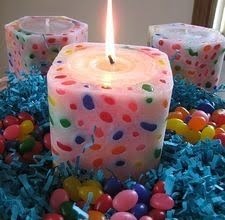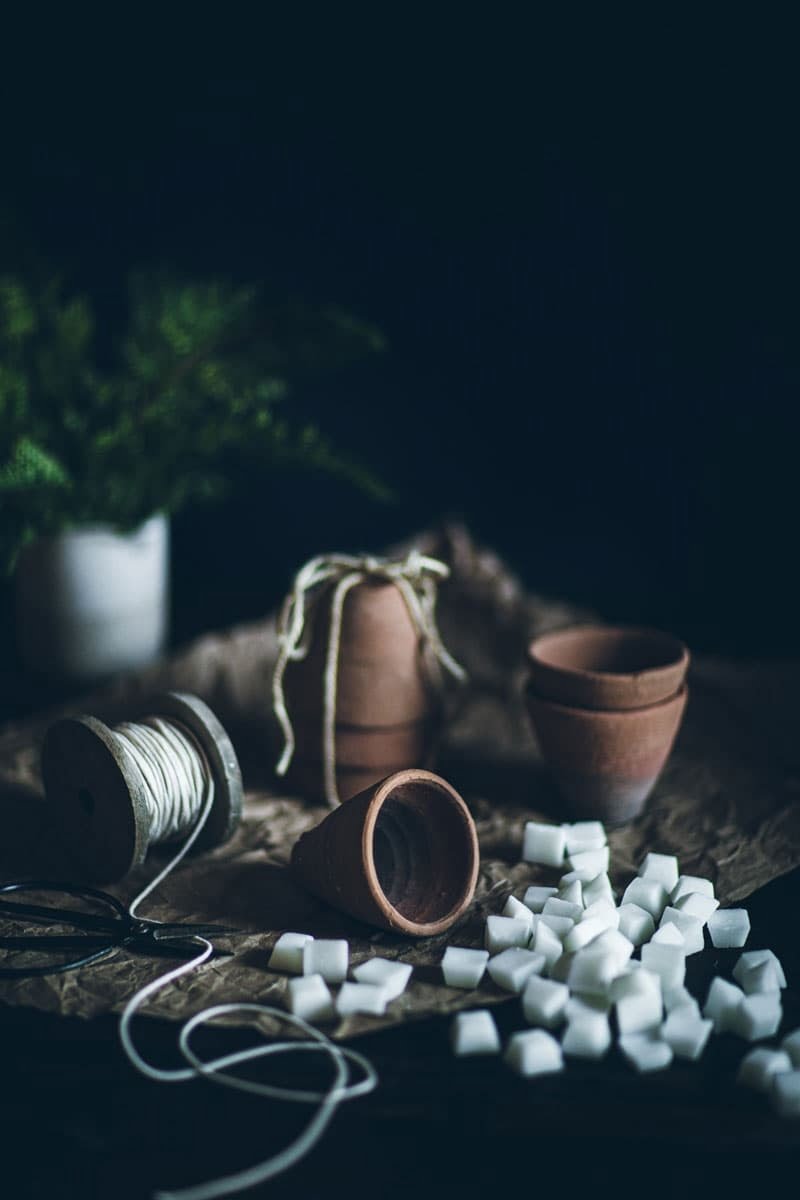Introduction
The Candle Making Kit from 1960 was a popular item that allowed people to create their own decorative candles. In the past, making candles – shaping them, moulding them, swathing them in vibrant colours – had been a craft reserved only for professional artisans. But with the advent of Candlemaking Kits in the 1960s, they suddenly became available to anyone who wanted to try their hand at candle making. These kits usually included such items as wax blocks, molds, color chips and threads/wicks. Some kits even came with instructions for creating specific designs and inspiration for more creative expressions. Candles made using these kits could simulate anything from classical Greek Columns or majestic Swan figures to highly intricate animals or the most delicate flower buds. The ability to create personalised design elements along with an easy-to-follow instruction manual made these kits attractive and accessible for many eager creatives. With a little imagination, novices to experienced professionals alike were able to express their creativity in new and exciting ways.
The Rise of Candle Making in the 1960s
The 1960s was an era of significant innovation and creativity, particularly in the area of crafting. One craft experience that rose greatly in popularity during this time was candle making. Candle making kits entered the market, allowing even novice crafters to create beautiful candles with minimal effort. Amateurs were able to produce their own beeswax candles at home for a fraction of the cost of buying them from a professional store. This newfound ability allowed everyone from simple hobbyists to experienced professionals access to creating fragrant wax masterpieces.
Candles were used for centuries prior to the 1960s as light sources, religious symbols and decorations. The activity reached new heights during this decade, with many craft stores offering classes on how to make and decorate candles by hand. These classes provided skills for students ranging from traditional methods such as dipping tapers in molten wax up through more modern practices such as molds and carved designs using materials like bee’s wax or paraffin waxes mixed with scent oils.
Candles created in these classes often served as focal points when added to centerpieces and mantelpiece displays or decorations around homes or offices. They were also popular gifts during holiday seasons because they offered a way to express your personal style through custom colors, shapes, sizes and scents which could not always be found storefronts
Features and Benefits of Candle Making Kits from 1960
Candle making kits from 1960 provided a fun and creative way to make beautiful candles from the comfort of your own home. These kits came with all the supplies a hobbyist would need such as wax, wicks, molds, and dyes. With these kits, candle makers could create unique shapes and designs with vibrant colors and scents that added an extra level of personalization. They also included instructions on how to make safe and reliable candles within a few hours.
Aside from being great projects for crafters who had an interest in candle making, these kits also allowed people to save money on buying finished candles. In addition, they provided candle makers with insight into the process of how the supplies went together so they could make more intricate designs in their future projects. Furthermore, purchasing their own candle making kit was much more eco-friendly than buying several individual products at stores as it often produced less waste. Candle-making kits from 1960 were also an excellent tool for teaching children about various concepts such as chemistry or basic craftsmanship in a fun way that helped foster creativity.
Traditional Candle Making Techniques and Designs of the Time
The Candle Making Kit from the 1960s was a great way for people to learn about and practice traditional candle making techniques at home. During this time, popular designs for hand-made candles included tapers in colors, dipped beeswax candles, and container candles with molds. Many of these designs were inspired by classic chandelier or pillar designs popular throughout the period. In addition to traditional methods, kits from the 1960s often included supplies to create unique molded, carved or scented candles that could be tailored to a desired look or aroma. People could use molds and fragrances to design colorful designs and shapes that may have not been possible using only traditional methods. Not only were these decorating options fun and cost-efficient, but they gave hobbyists freedom to create individualized pieces that could rival the quality of store-bought ones.
Differences in Candle Waxes Tried and True in the 1960s
In the 1960s, most candle waxes used for making candles came from either animal-based or vegetable-based sources. Animal-based waxes often had a higher melting point and were ideal for creating a stronger and sturdier candle. Tallow, which was rendered fat from animals like sheep or cows, was the most common type of animal-based wax used at this time. Beeswax was also popular as it burned cleanly with minimal smoke produced.
Vegetable waxes were also tried and true in the 1960s, but they were not preferred for their strength nor durability due to their low melting points. Soybean wax and Carnuba (or carnauba) wax were two of the most common types of vegetable-based waxes used in the 60s. While they weren’t as hardy as animal-based waxes when they melted down, they produced less of an odor when burning than other types of candle wax. They also released less black soot while burning which made them an attractive option for those looking to create healthier candles at home.
Popular Candle Making Recipes of the Era
Candle making was once a popular pastime in the 1960s, and there were numerous kits available to help make the process easier for hobbyists. The Candle Making Kit released during this era included recipes for several popular candle-making creations of the time. These recipes ranged from basic wax candles with simple scents and decorations, to more elaborate designs such as beeswax candles carved with intricate shapes or featuring various adornments. For those looking to create candles in more traditional shapes, they were able to make tapered, cylinder, pillow, and ball shaped candles with various sizes depending on the situation. For those looking to add scent to their creations, the kit featured essential oils like lavender, vanilla, jasmine, and sandalwood which could be added directly into melted wax. Other creative additions could include dyes or glitter for an extra bit of sparkle as well as other embellishments such as ribbon or trinkets for a unique touch. By using these recipes from old kits such as the 1960s Candle Making Kit, hobbyists are able to recreate unique ornamental candle designs from bygone eras.
How Today’s Candle Making Kits Compare to Kits from 1960
Today’s candle making kits are far more advanced than those that were available decades ago. Candles were originally made using tallow, a substance obtained from the fat of cows, sheep, and even deer. Today’s candle making kits provide a much safer and cleaner way to craft candles. They come with a wide variety of waxes, such as beeswax and soy wax, allowing for an endless number of design possibilities. Instead of tallow, today’s kits come with paraffin wax which is entirely non-toxic and safe to use indoors. Furthermore, due to enhancements in technology over the last few decades, wicks used in modern day candle making kits can be made much longer and stronger compared to 1960s wicks. On top of that, many kits also include scented oils, giving crafters the option to customize the scent of their candles as desired. Finally, today’s candle making kits also often come with stencils and other molding materials which can help add patterns or designs into the candles themselves creating an expert looking final product. Compared to 1960s versions which could be extremely rudimentary in terms of supplies provided ” it is clear that today’s candle making kits offer a vastly improved experience for crafters looking to explore this exciting art form.
Conclusion
Crafting with a Candle Making Kit from 1960 is a memorable and rewarding experience for anyone who has the chance to do so. With the kit, users can make their own custom candles with an abundance of beautiful colors and fragrances. The kit comes with all tools needed to create homemade candles of any shape or size, as well as provide tips and tricks on how to get the most out of each candle-making session. Not only will users be able to make custom candles, but they can also learn about basic candle making techniques, such as wicking, pouring and molding processes. By tracing back to figures in history that used these same tools and techniques, users gain a greater appreciation for creating personalized items within the comfort of their own homes. Using a Candle Making Kit from 1960 provides users not only with a fun craft activity but also gives them knowledge that can be carried through generations.

Welcome to my candle making blog! In this blog, I will be sharing my tips and tricks for making candles. I will also be sharing some of my favorite recipes.


